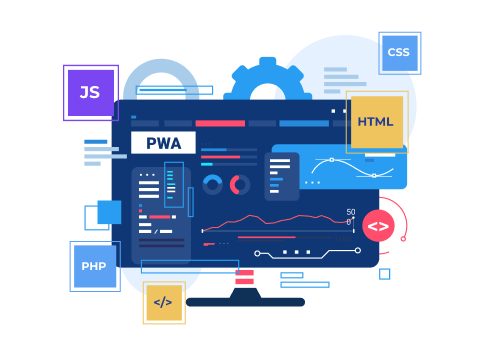
In the ever-evolving world of web development, Progressive Web Apps (PWAs) have emerged as a powerful solution to bridge the gap between traditional web applications and native mobile experiences. This article explores the transformative impact of PWA development, shedding light on key features, benefits, and best practices for creating cutting-edge web applications. If you want to learn more about PWA Development visit Stickball.
Understanding Progressive Web Apps (PWAs)
Progressive Web Apps are web applications that leverage modern web technologies to deliver an app-like experience to users. They are designed to work seamlessly across various devices and offer features traditionally associated with native mobile applications.
Key Features of Progressive Web Apps
-
Responsive Design:
- PWAs adapt to different screen sizes and resolutions, providing a consistent and engaging user experience on desktops, tablets, and smartphones.
-
Offline Functionality:
- One of the hallmark features of PWAs is their ability to function offline or in low-connectivity environments, ensuring users can access content even without a consistent internet connection.
-
App-Like Interactions:
- PWAs offer smooth and fluid interactions, including gestures and animations, making the user experience feel native and intuitive.
-
Push Notifications:
- Users can receive push notifications from PWAs, allowing for re-engagement and keeping users informed about updates or relevant content.
-
Secure Connection (HTTPS):
- PWAs require a secure HTTPS connection to ensure data integrity and security, establishing a trustworthy environment for users.
Advantages of PWA Development
-
Cross-Platform Compatibility:
- PWAs are compatible with multiple platforms, reducing development efforts and costs associated with creating separate applications for different operating systems.
-
Enhanced User Engagement:
- The app-like experience, offline functionality, and push notifications contribute to increased user engagement and retention.
-
Improved Performance:
- PWAs leverage service workers to cache content and optimize performance, resulting in faster load times and smoother interactions.
-
Cost-Effectiveness:
- Developing a single PWA that works across platforms is more cost-effective than building separate native applications for each platform.
-
Discoverability:
- PWAs are discoverable through search engines, enabling users to find and access the application easily without the need for app store installations.
Best Practices for PWA Development
-
Responsive Design and Compatibility:
- Prioritize a responsive design that caters to various devices, ensuring a consistent and user-friendly experience.
-
Service Worker Implementation:
- Implement service workers effectively to enable offline functionality and enhance performance by caching necessary resources.
-
Secure Connection:
- Use HTTPS to secure data transmission, instilling trust in users and meeting the security requirements for PWAs.
-
App Manifest Optimization:
- Optimize the app manifest to provide essential information such as icons, names, and colors, enhancing the application’s appearance on users’ devices.
-
Push Notification Strategy:
- Develop a thoughtful push notification strategy to engage users without being intrusive, providing value through timely and relevant updates.
Conclusion
In conclusion, PWA development represents a paradigm shift in web application design, offering a harmonious blend of cross-platform compatibility, engaging user experiences, and cost-effectiveness. As businesses and developers increasingly recognize the advantages of PWAs, the future of web development is poised to be shaped by these versatile and user-centric applications. Embracing PWA development is not just a technological choice; it’s a strategic move towards delivering modern, responsive, and impactful web experiences that meet the evolving expectations of users in the digital age.






